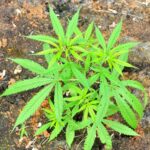W hen biologists first began to classify cannabis plants through the process known as taxonomy, only one type of species was discussed. Named Cannabis indica Lam. after the botanist Jean-Baptiste Lamarck who first studied it in 1753, these short, bushy plants grew throughout cool, high altitude regions, most notably the Hindu Kush mountain range.
hen biologists first began to classify cannabis plants through the process known as taxonomy, only one type of species was discussed. Named Cannabis indica Lam. after the botanist Jean-Baptiste Lamarck who first studied it in 1753, these short, bushy plants grew throughout cool, high altitude regions, most notably the Hindu Kush mountain range.
Years later, around 1785, Lamarck described a completely different cannabis plant that grew around hotter equatorial regions, including Thailand, Mexico and Southeast Asia. He named these taller, skinnier plants Cannabis sativa.
Centuries later, we consider both plants to be part of the same species, but to lie within different subspecies. However, the nomenclature of “indica vs sativa” helps to describe a set of expected qualities between the two types. Notably, that sativas tend to elicit a bright, alert “heady” high associated with THC and indicas most often present a relaxing, sedative “body” high associated with other cannabis compounds.
Modern botany and medicinal science may dispute such an arbitrary distinction, but the terms indica and sativa can nevertheless be helpful to patients looking for the desired medical cannabis effects.
Indica Strains
Visual Differences
Indica strains typically have plump-looking flowers with thick, ball-shaped nodules throughout. The color of the flowers may be a more consistent light green shade because of the density of soft plant material.
Scent Differences
Indica strains and indica-dominant hybrids typically have sweeter, more floral scents rich with notes of fruit.
Name Differences
Indica strains and indica-dominant hybrids will often be referred to in names ending in “kush,” referring to their traditional cultivation in the Hindu Kush mountain range. E.g. Bubba kush, OG kush, purple kush
Indica Effects
Indica-based cannabis strains typically have a high concentration of compounds that lead to total body effects, including enhanced visual and auditory effects, intense euphoria, relaxation, appetite stimulation and sleepiness.
Based on these effects, indica-based strains may be more effective for:
- Appetite disorders
- Anxiety
- Insomnia
- Chronic pain
Sativa Strains
Visual Differences
Sativa strains typically have longer, wispy-looking flowers with more noticeable leaves and hairs. They may also have a darker shade or more intense color variations because of the less-dense plant matter.
However, many have intense levels of THC-rich trichomes that create a pale, shimmery and quite sticky flower.
Scent Differences
Sativa strains and sativa-dominant hybrids typically have a more piney, acidic scent similar to fresh-cut grass, pine sap, lemon or potpourri.
Name Differences
Sativa strains and sativa-dominant hybrids will often have names ending in “haze,” in reference to their shimmery appearance when coated in trichomes. E.g. Lemon haze, silver haze
Sativa Effects
Sativa strains are typically associated with THC-induced energy and euphoria. These mental-centric “highs” often feel stimulating and allow for more creative mental processing and motivation to perform certain tasks.
Based on these effects, sativa-based strains may be better for treating the following:
- Depression
- Certain types of neuropathic pain
- Fatigue
- Mood disorders
- ADHD
- Appetite disorders
Find the Indica vs Sativa Strain, Hybrid or Cannabis Product You Need at Euphoria
Euphoria Wellness employs knowledgeable health consultants to help pair you with the products that can best suit the intended effects and medical needs for your unique set of conditions. Many times, a hybrid can blend the desired qualities of both an indica and a sativa to produce a balanced set of effects. You can find more information abut cannabis strains and their uses in our Cannabis Strain Guide.
Call 702-960-7200 to schedule a visit or place an order for Las Vegas cannabis delivery to your home.
This content is not intended as medical advice. The information provided is meant to encourage cannabis education, not replace direct patient-healthcare professional relationships. Always consult your primary care physician or other healthcare provider prior to using cannabis products for treatment of a medical condition. Any statements contained herein have not been evaluated by the Food and Drug Administration. Products referenced are not intended to diagnose, treat, cure, or prevent any disease. Products are only available where the consumption of cannabis is legal.
